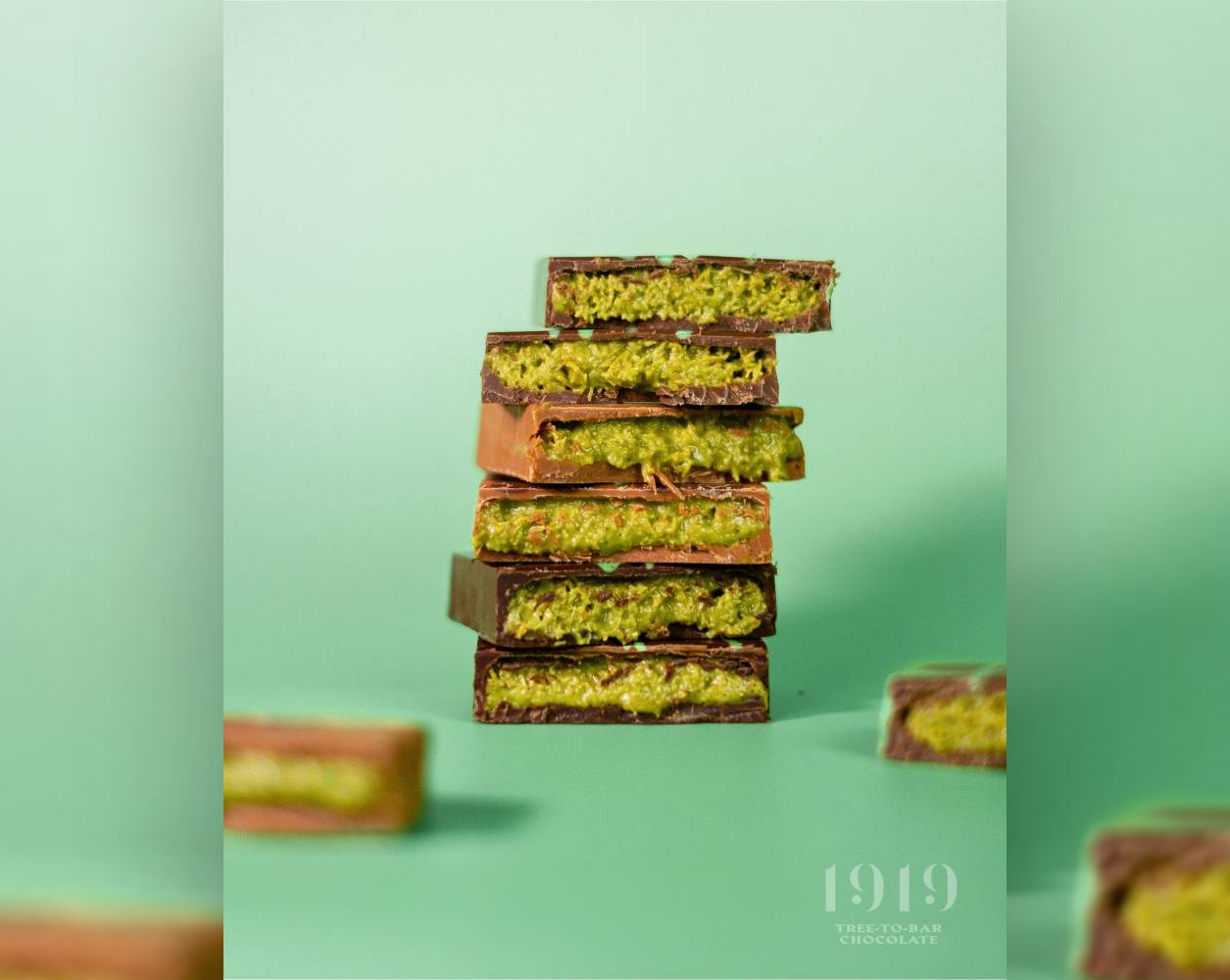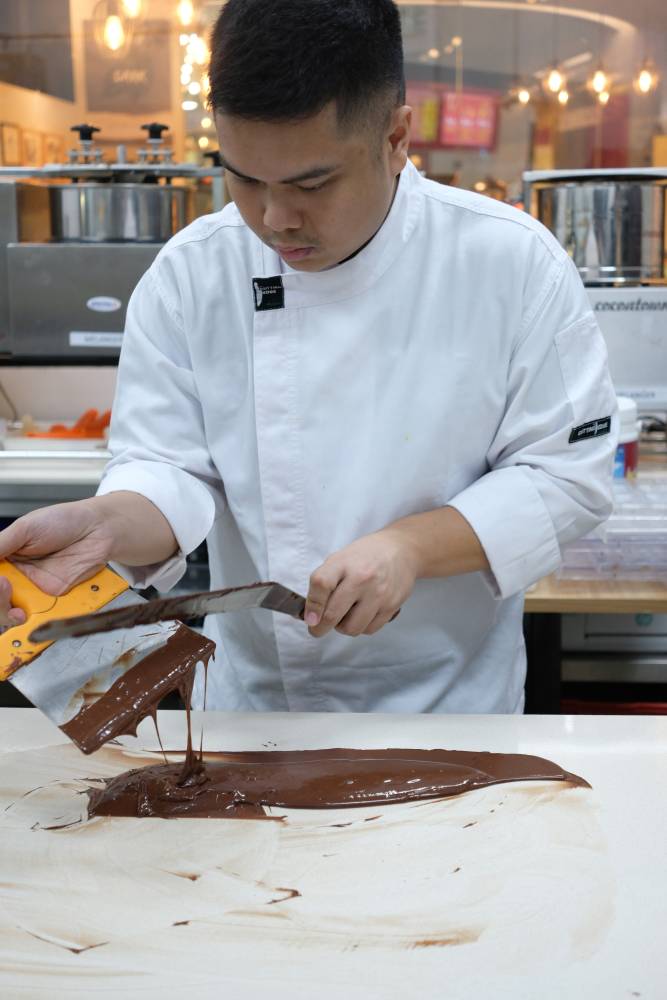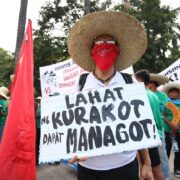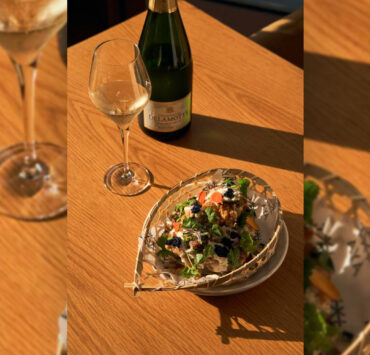Bean to bar: The sweet story behind this Filipino chocolate brand

Growing up on her grandparents’ farm in Malvar, Batangas, Krizelle Santos learned about cacao. Her grandmother showed her how to prepare the pods for tablea, carefully opening the pod, revealing the beans within their sweet, white pulp. The child gently sucked the pulp from the beans. Subsequently, the beans were washed, sun dried, roasted, and ground, transforming into tablea. Later on, Santos learned that fermentation enhances the aroma and flavor of cacao, resulting in a more complex taste.
We first heard about Santos and her husband, Karl, from Anya’s executive chef Christopher Leaning, who commended their 1919 Chocolate-branded products used by the resort for confections and drinks. Lanson Place also orders their chocolate for tablea beverage and a customized bar for the hotel. Their brand, 1919 Chocolate, is sold at SM Kultura with other local craft chocolates. This type of artisanal chocolate is made in small batches with an emphasis on quality, transparency, and the flavors of carefully sourced cacao beans. Unlike mass-produced chocolate, craft chocolate makers often oversee the entire process, from bean selection to the finished bar, highlighting the cacao’s terroir, the factors that influence the crop’s attributes.

Choosing cacao
“Cacao has a special place in my heart,” says Santos. While many millennials prefer corporate jobs, the 36-year-old chose to become a cacao farmer, following her grandparents Emilia and Felipe Tizon, who cultivated various fruits, including cacao. When the elder Tizons passed the farm to their children, none showed interest. Hence, her mother bought out her siblings.
To honor her grandparents, Santos took over the farm, which mostly cultivated fruits, while cacao was limited to the backyard. She then expanded her knowledge by studying processing and cultivation under the Cocoa Foundation of the Philippines. She also had mentors from Davao who helped in the development of the cacao farm.
To expand her knowledge, Santos’ husband suggested that to generate interest in her cacao beans, they needed to produce chocolate products.
After completing a short course in chocolate-making in Singapore in 2019, they launched 1919 Chocolate, named after the birth year of Santos’ grandparents. The couple started with a tabletop chocolate melangeur, a grinder that processes cocoa bean nibs into chocolate liquor.
“When I got beans from the farm and made them into chocolates, we were surprised by the quality,” recalls Santos.
Although cacao production is concentrated in the Davao region, Batangas and Cebu are also important growers. Santos’ farm produces criollo, known for its delicate flavor and quality.

Award-winning
In 2020, they entered their 62% Dark Chocolate in the Academy of Chocolate Award and won silver in the Tree to Bar category. It won silver yet again in 2021, while the 70% Dark Chocolate won bronze. The Academy of Chocolate champions genuine chocolate as an independent organization. Collaborating with manufacturers, producers, and retailers, the Academy strives to elevate public appreciation for chocolate’s significance. Judges assess chocolate based on aroma, texture, formulation, taste, flavor profile, balance, execution, mouthfeel, and lingering flavors.
Today, their products are produced in a facility in Quezon City. Santos’ favorite bar is the Toasted Milk and Strawberry, unique to 1919 Chocolate. “We toast the milk so it tastes like caramel. There’s a tangy note from the strawberry,” she says.
The Ube Chocolate must melt in the mouth to release the halaya flavor. “We used freeze-dried ube in the white chocolate and a little coconut milk powder for added flavor.”
However, Philippine chocolate makers have faced challenges recently. A worldwide shortage of cacao beans has increased the cost of their main ingredient. Additionally, dry weather and successive typhoons in the Philippines have affected local cacao harvests. These problems mean chocolate companies are struggling with higher costs, which they have often absorbed to avoid raising prices for shoppers.
Chocolatiers and companies relying on pre-made couverture were more affected by the global cacao shortage and supply chain disruption. Chocolate makers such as the Santoses, with their own farms, have a buffer against these fluctuations and more control over their primary ingredient, giving them a relative advantage in this challenging environment.
To make 1919 Chocolate more accessible and affordable, they developed a new product. They capitalized on the viral Dubai Chocolate trend, created by Filipino chef Nouel Catis, which gained popularity in late 2023. For Fix Dessert Chocolatier, he developed a milk chocolate bar filled with pistachio cream and a shredded phyllo pastry, providing a crunchy texture. Many brands have created their own versions since it used less chocolate and focused on the rich filling.
Santos says their version uses their own couverture chocolate, which has a higher cocoa butter content for a silkier taste with a pistachio filling. It is called the Knafeh Crunch, named after the knafeh, a Middle Eastern confection made of kaitafi and a soft cheese filling.
The complex flavors and bitterness of craft dark chocolates can be unfamiliar to a market accustomed to the cloying sweetness of mainstream brands. On the other hand, the Knafeh Crunch was well received. “We were surprised by the reach. The Dubai chocolate-inspired bar is the direction we want to pursue,” says Santos.

















